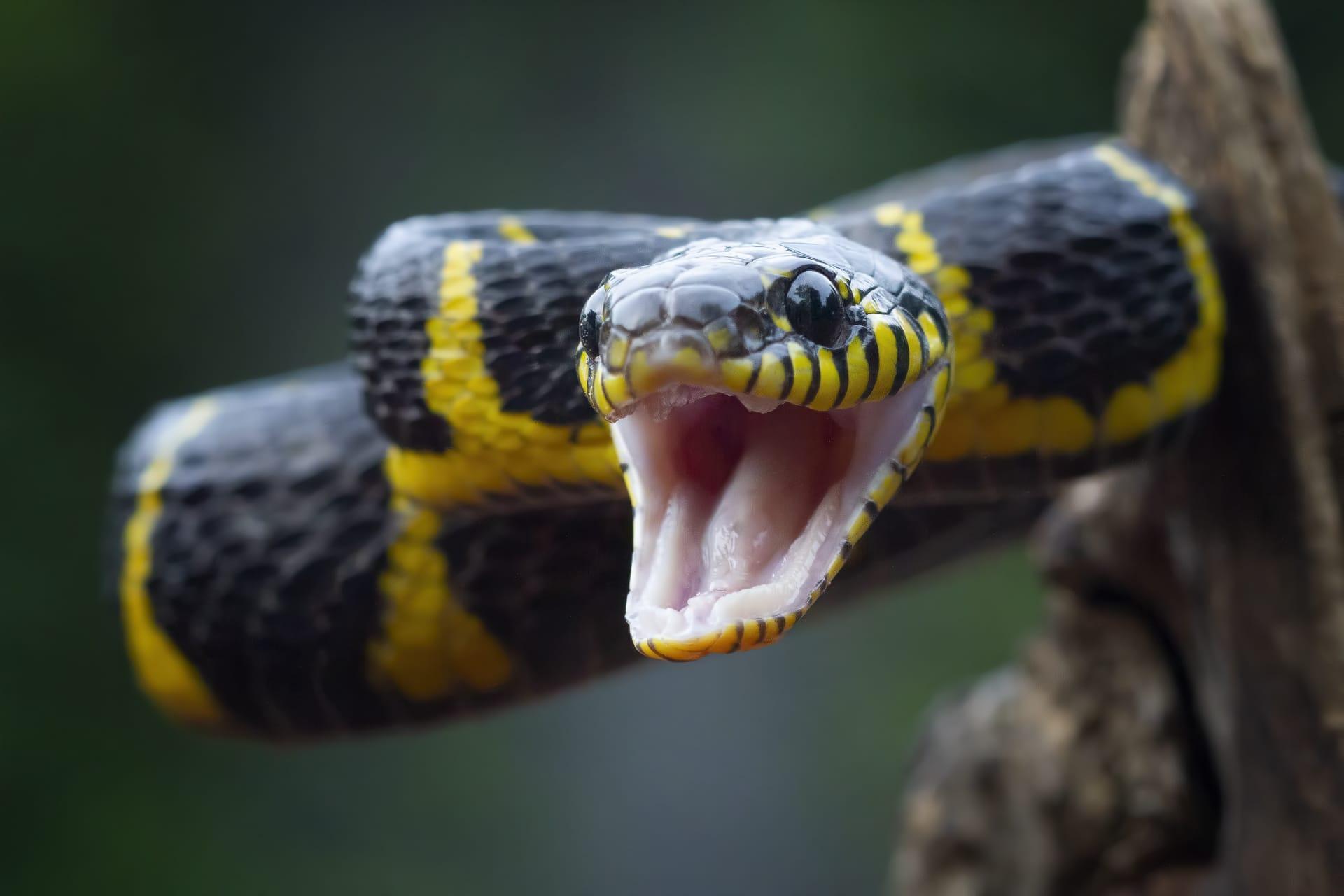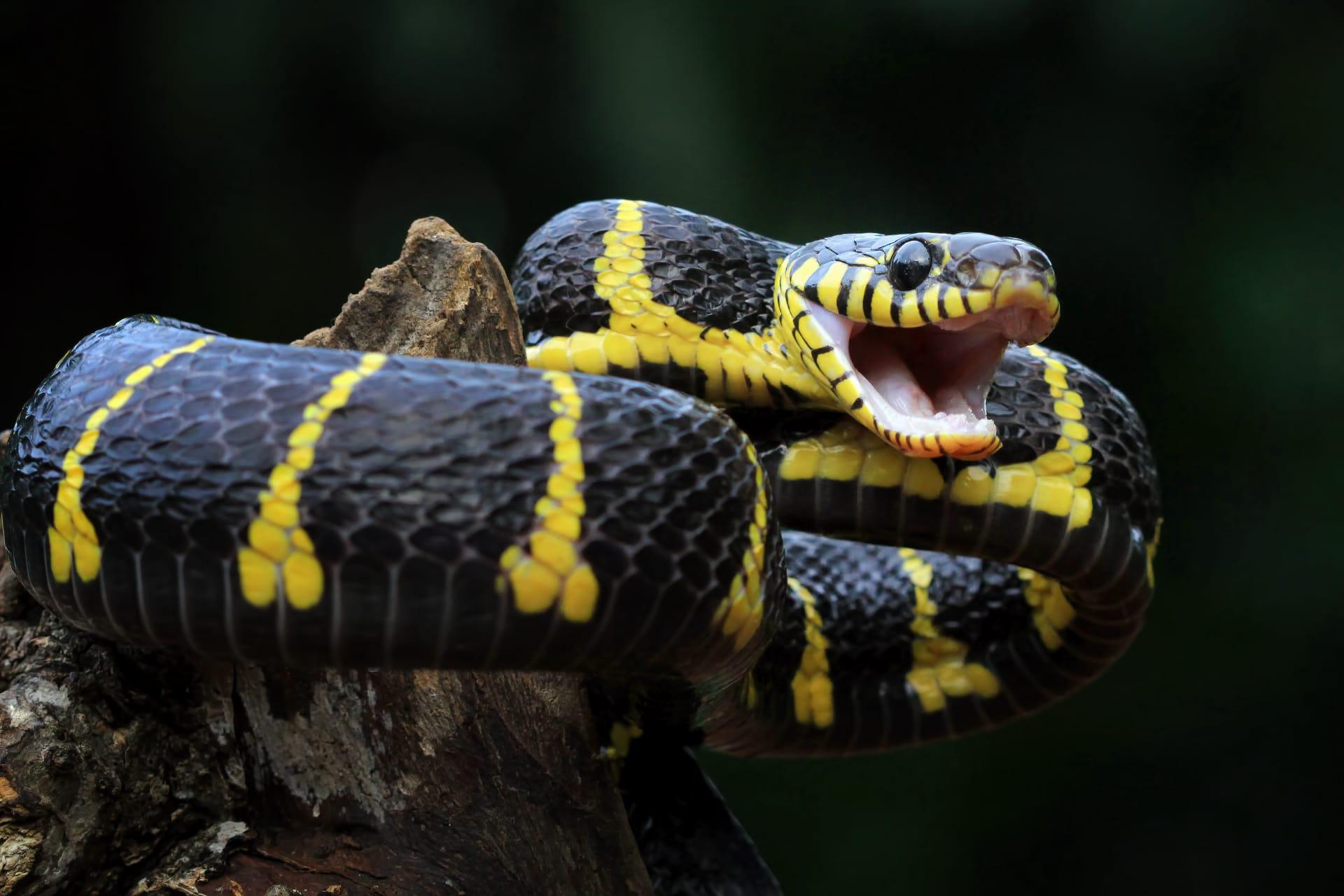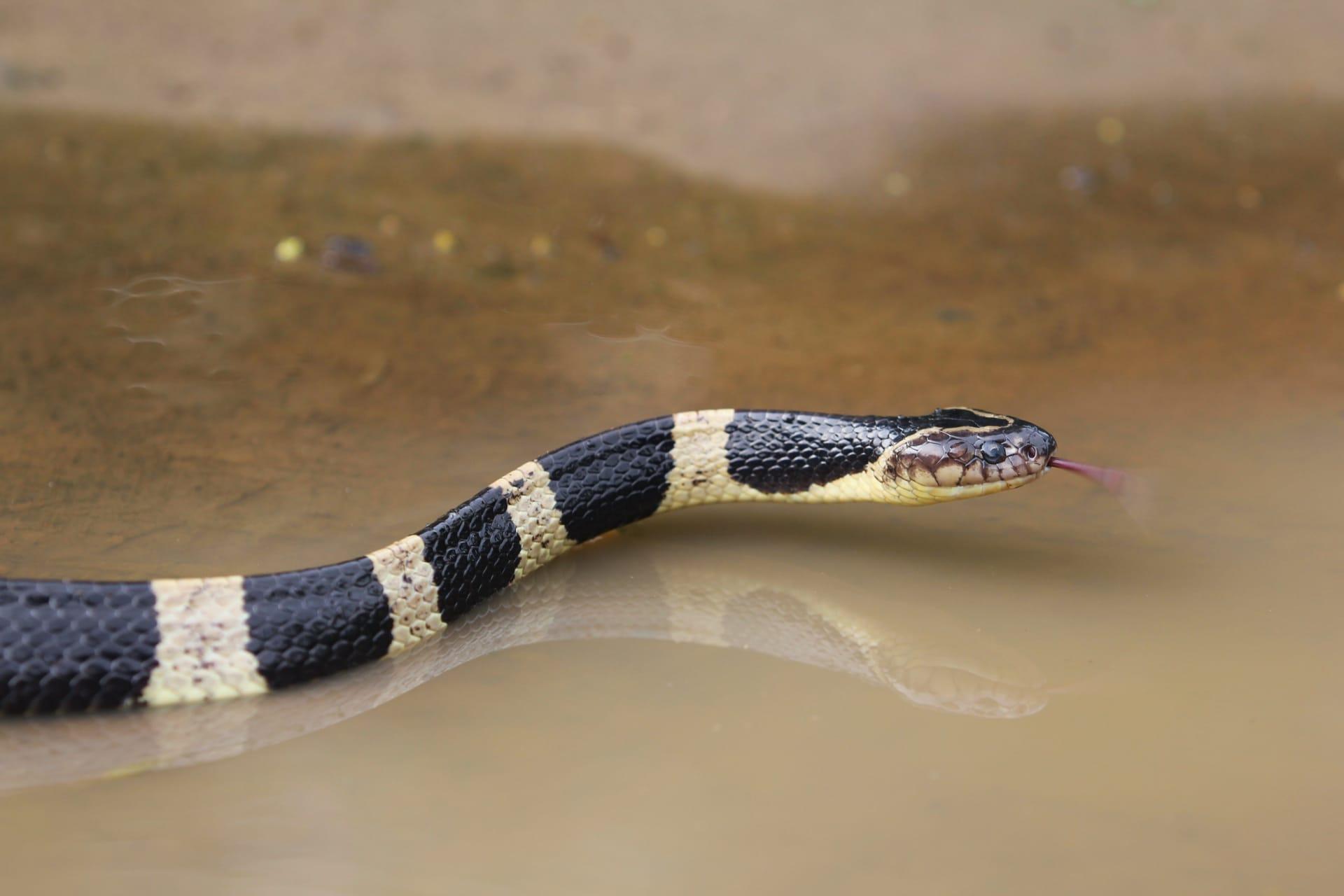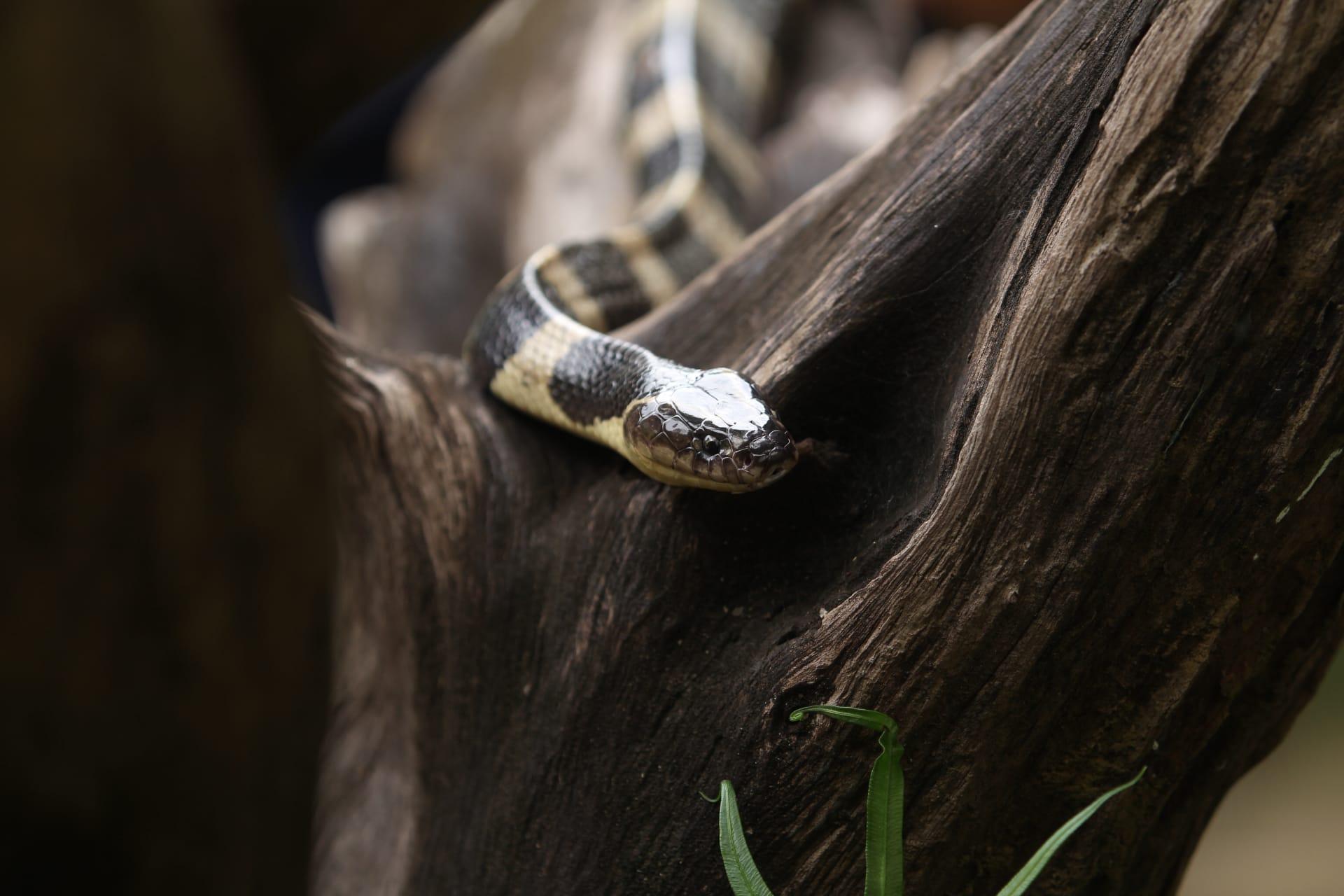Banded Krait Characteristics
- Home /
- Mini Encyclopedia /
- Animal /
- Banded Krait Characteristics
1
The Banded Krait, known scientifically as Bungarus fasciatus, is a visually striking snake. This species, easily recognized by its alternating black and yellow bands, can grow up to 6.5 feet (about 2 meters) in length. Their lifespan in the wild is somewhat elusive, but in captivity, they can live for up to 15 years. Banded Kraits possess a triangular body cross-section and a unique upturned snout, which is not just for show. Their snout is a distinctive adaptation that helps them forage in tight spaces and leaf litter.
Speaking of unique features, the Banded Krait's venom is its most remarkable organ. This venom, a potent neurotoxin, affects the nervous system, leading to paralysis and, in severe cases, death. The venom's composition is complex, containing various enzymes and proteins. These snakes use their venom primarily for hunting, subduing prey such as rodents and other snakes quickly and effectively. The potency of their venom reflects their specialized role in the ecosystem as efficient predators.

2
Question: "What should you do if you encounter a Banded Krait in the wild?"
Answer: Encountering a Banded Krait can be alarming due to its venomous nature. The key is to remain calm and avoid any sudden movements. Do not attempt to touch or capture the snake. Most snake bites occur when people try to handle or kill them. Maintain a safe distance, at least a few meters away. If the snake is in your path, wait for it to move along. Remember, Banded Kraits are nocturnal, so they're more active at night. If you're in an area where they are common, take extra caution after dark, use a flashlight, and watch your step.

3
The Banded Krait exhibits distinct locomotive characteristics. These snakes are primarily terrestrial but are also skilled swimmers. They move in a serpentine motion and are surprisingly agile, capable of navigating through complex terrains like dense underbrush. However, they are not climbers and prefer to stay on the ground or in shallow water.
When it comes to hunting, the Banded Krait is a nocturnal predator. It preys on other snakes, including venomous ones, small mammals, frogs, and lizards. The hunting strategy is ambush and quick envenomation. The snake uses its sharp, fixed fangs to deliver venom. Once the prey is immobilized, the Banded Krait swallows it whole. Their diet reflects their adaptability and skill as hunters in various habitats.

4
Banded Kraits favor habitats that provide cover and proximity to water. They are commonly found in forested areas, grasslands, and marshes across Southeast Asia and the Indian subcontinent. These environments offer abundant food sources and hiding spots. Banded Kraits are also occasionally seen near human settlements, drawn by the presence of rodents.
In terms of reproduction, Banded Kraits are oviparous, meaning they lay eggs. The breeding season typically occurs in the early rainy season. Females lay between 4 to 14 eggs per clutch, which they deposit in hidden, secure locations like rodent burrows or under rocks. The eggs incubate for about two months before hatching. The young are independent from birth and immediately capable of fending for themselves, including hunting and using their venom.

5
Book: "The Serpent Spectrum: A Study of Asian Snakes" by Dr. Marcus Elwood (United Kingdom, 1998). This book offers a comprehensive overview of various snake species in Asia, including the Banded Krait. Elwood's work is notable for its detailed descriptions of snake behavior, habitat, and physiology. The book provides valuable insights into the ecological roles and conservation status of these fascinating reptiles.
Book: "Venomous Snakes of the East: Ecology and Ethology" by Prof. Anita Rao (India, 2003). Focusing specifically on venomous snakes in Eastern regions, including the Banded Krait, this book delves into the intricate world of snake venom, its effects, and the snakes' roles in their natural habitats. Rao's work is a blend of field study observations and laboratory research, making it a crucial resource for understanding the complex nature of these creatures.